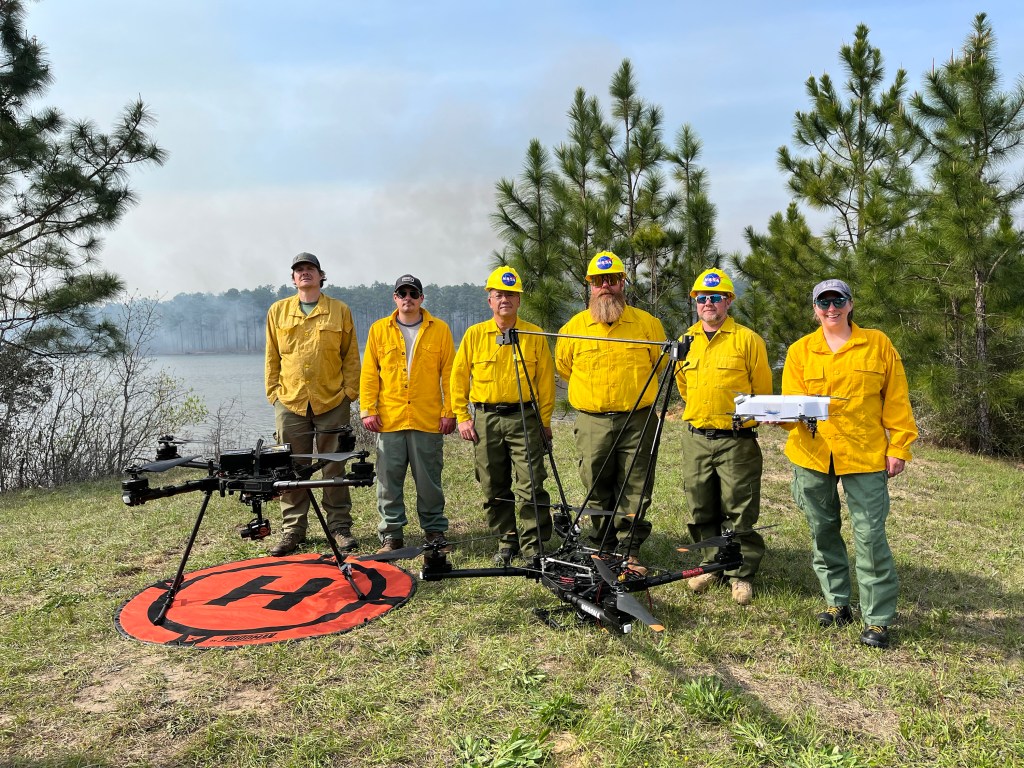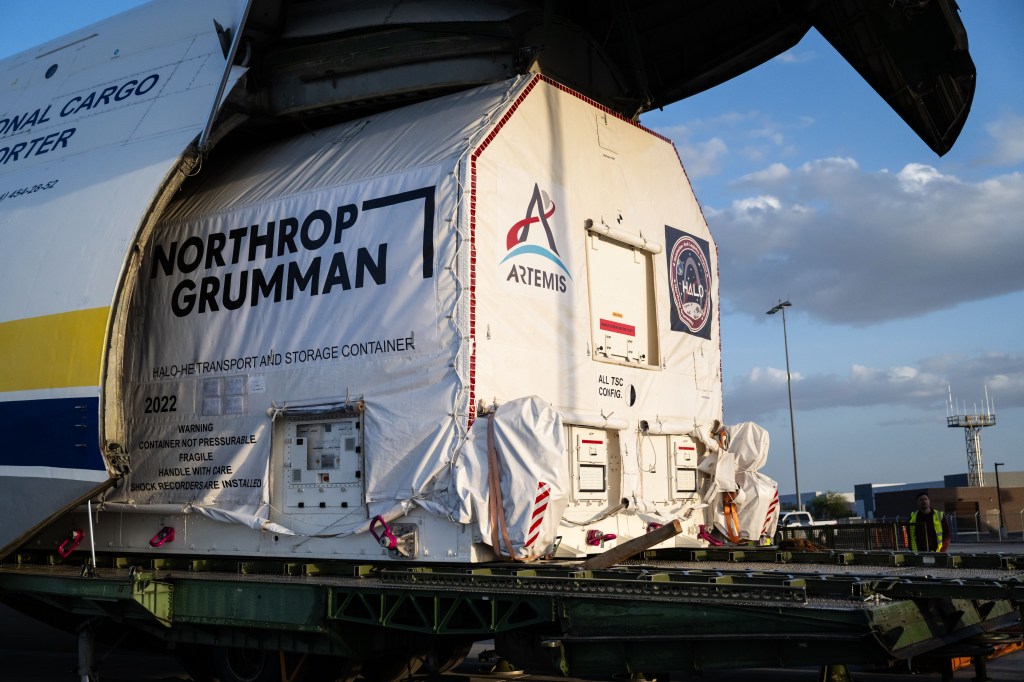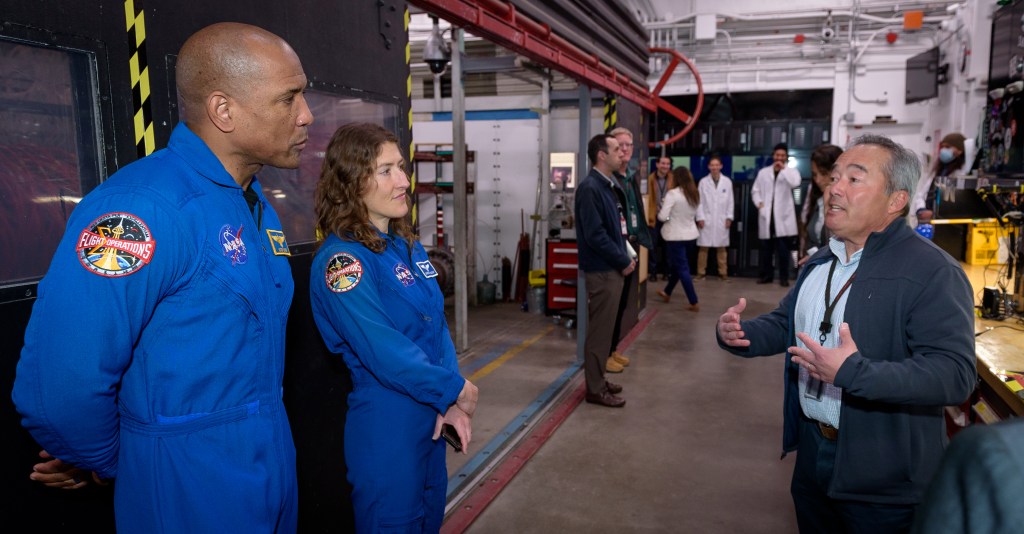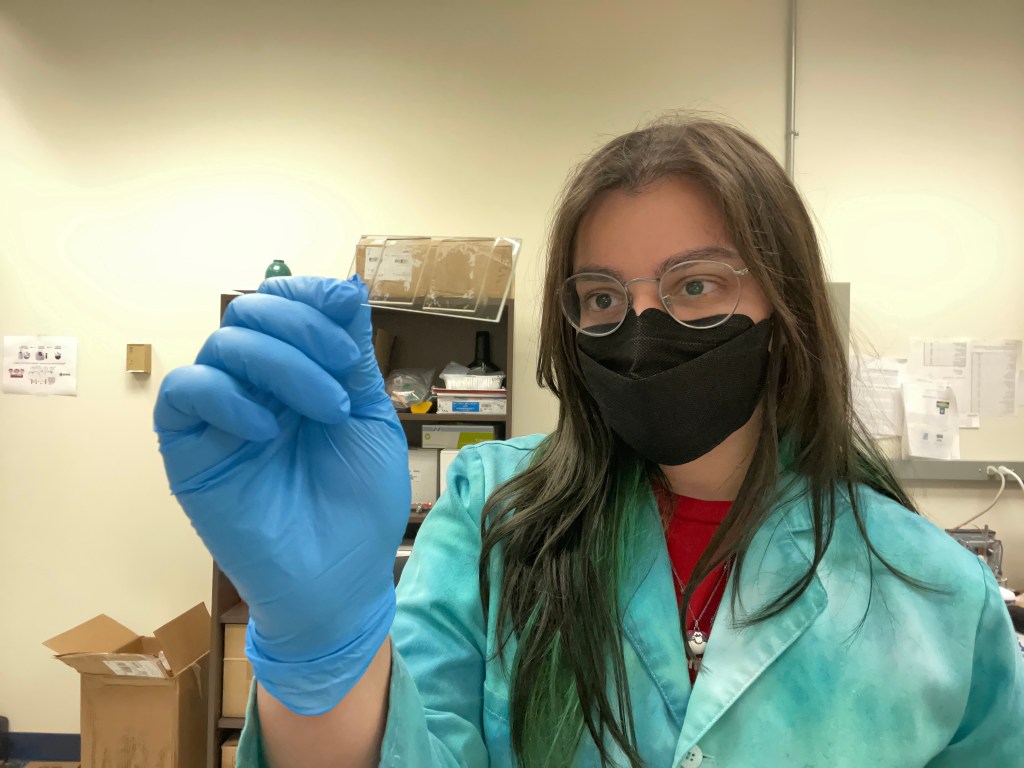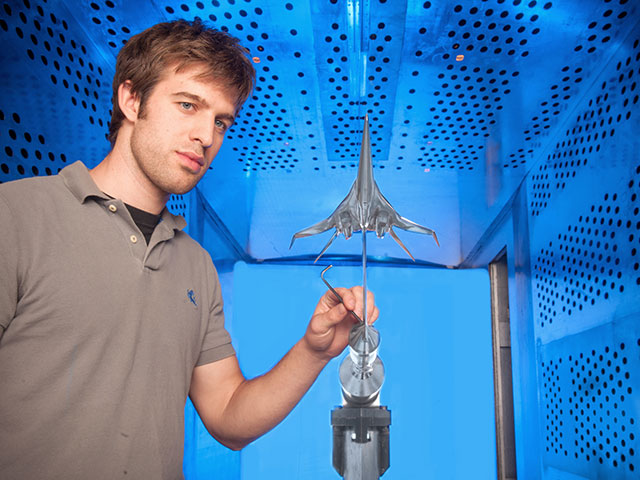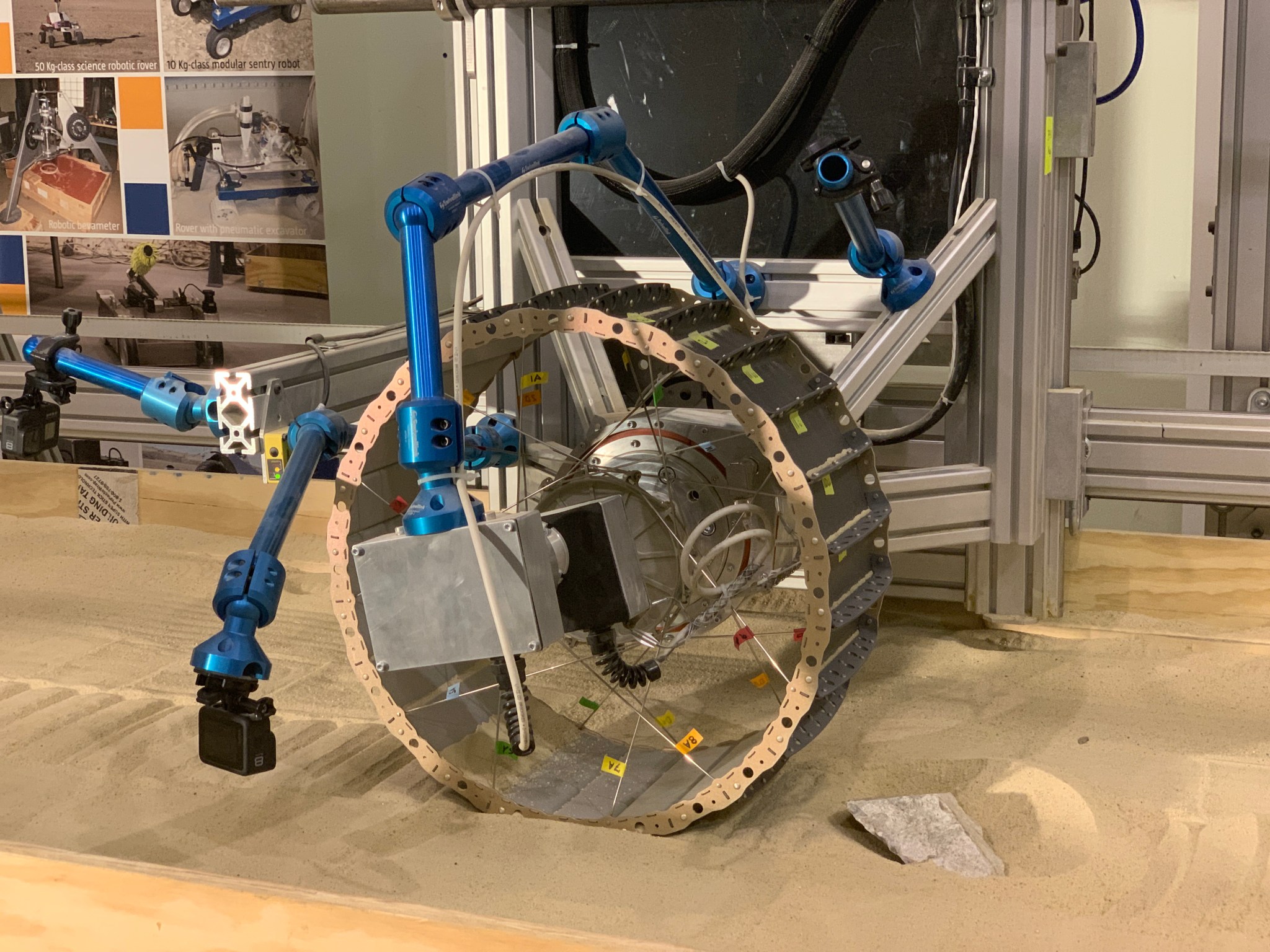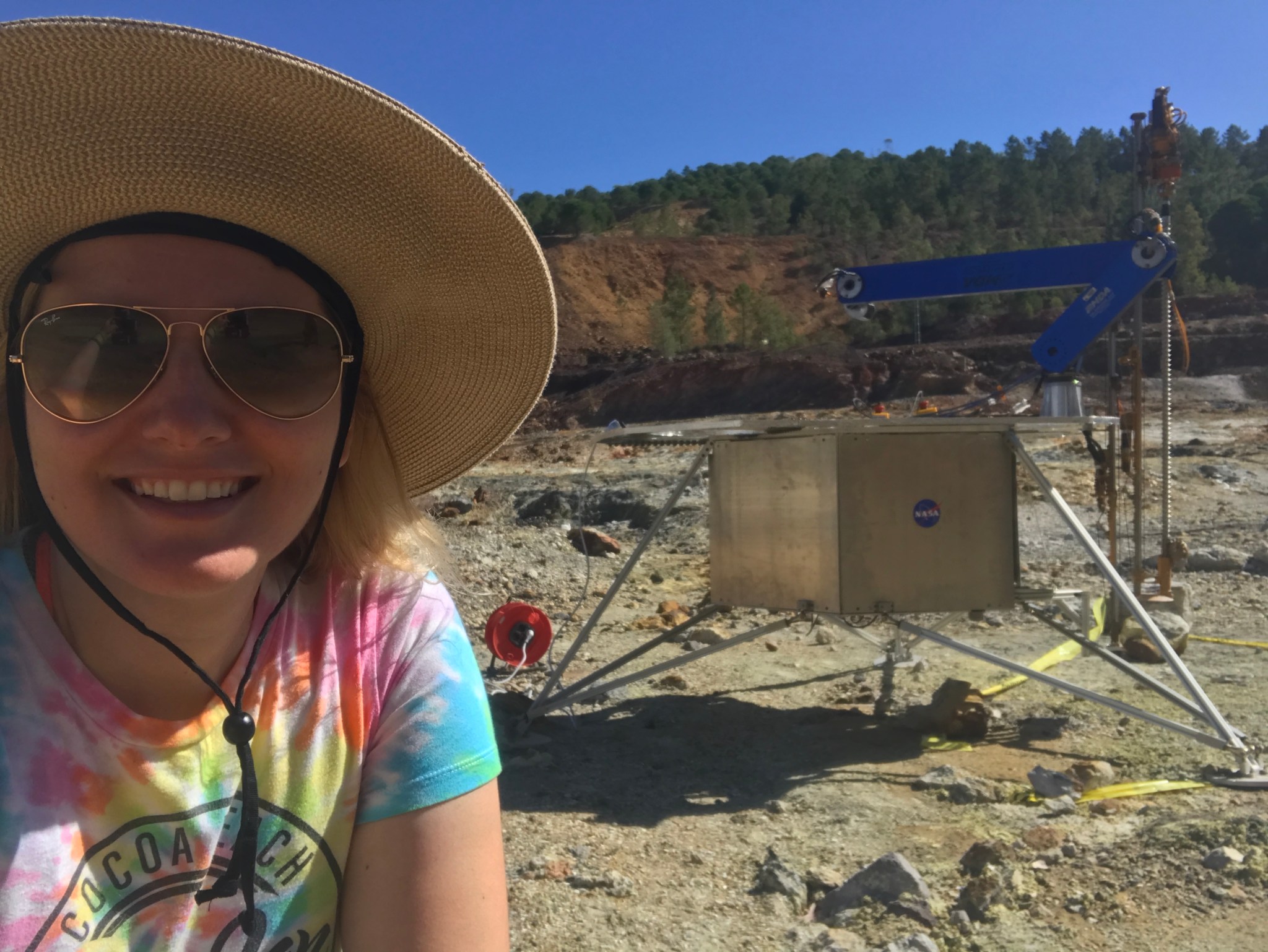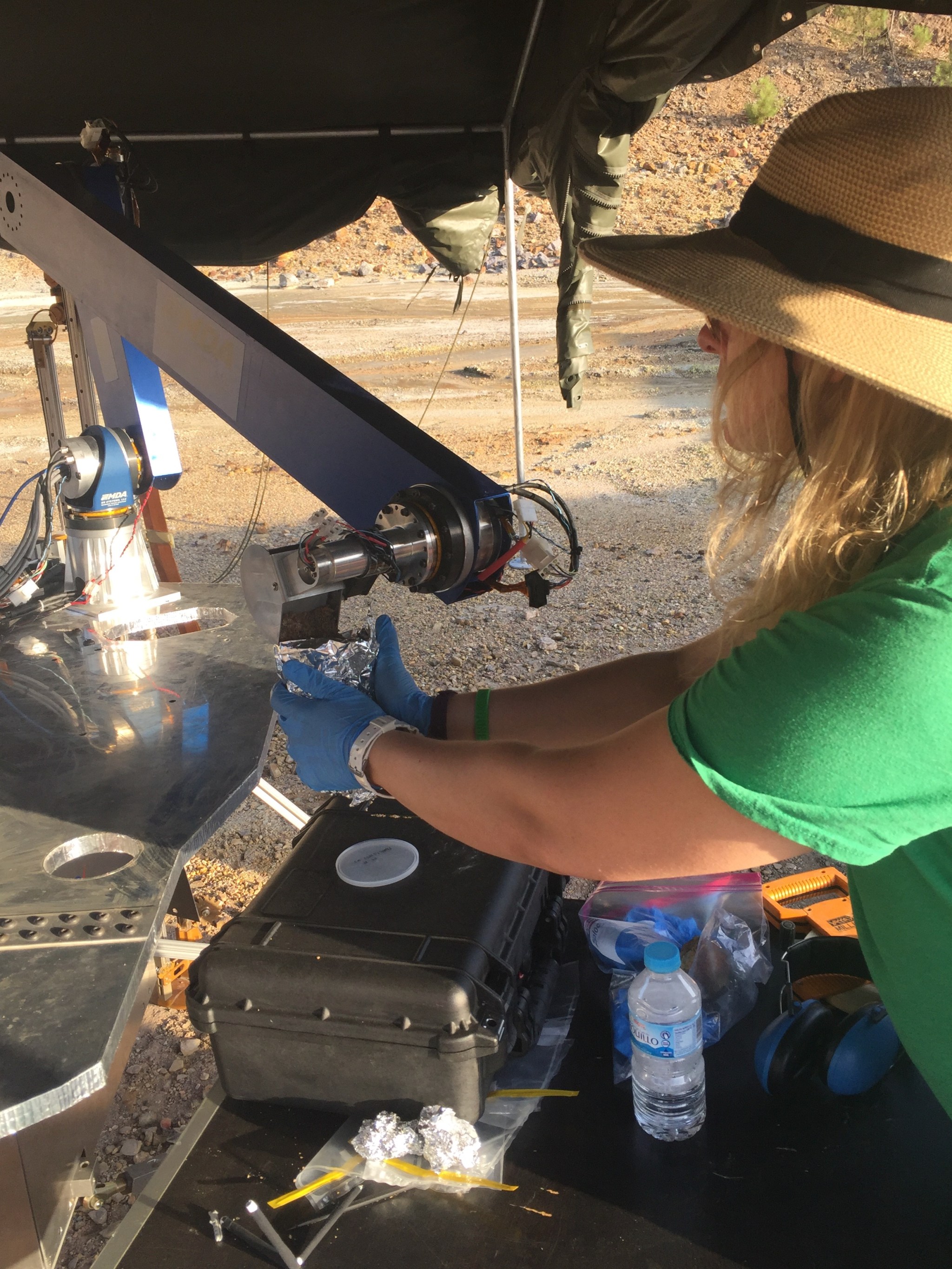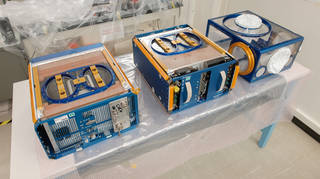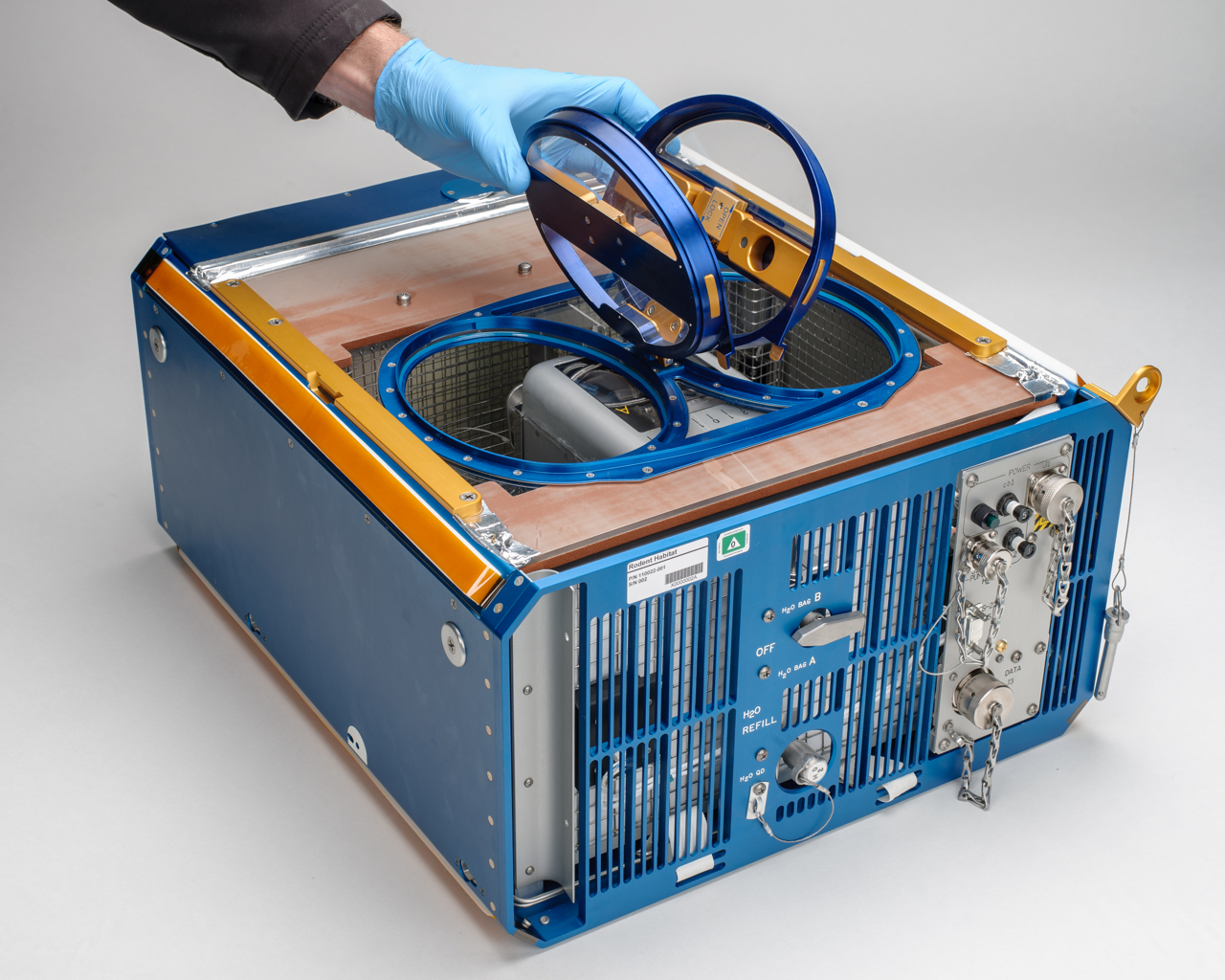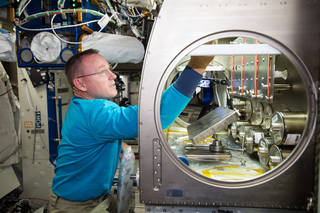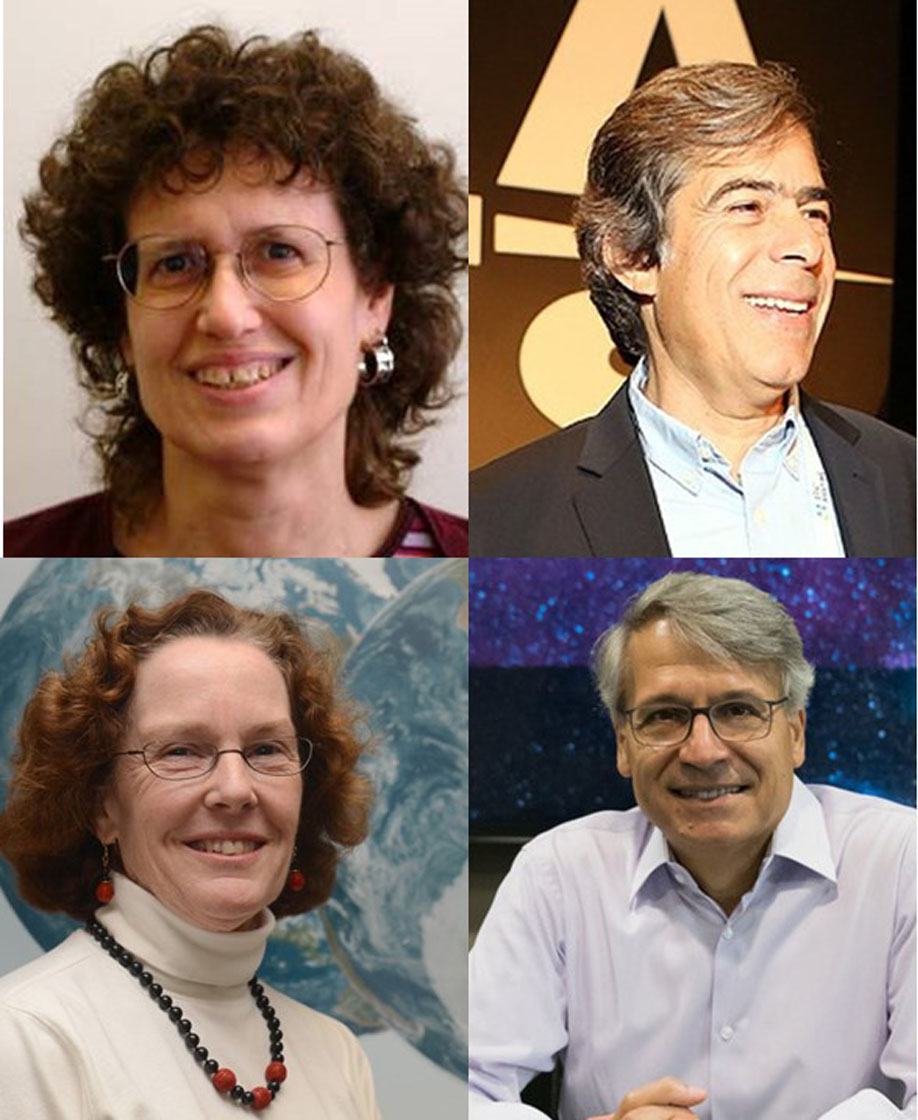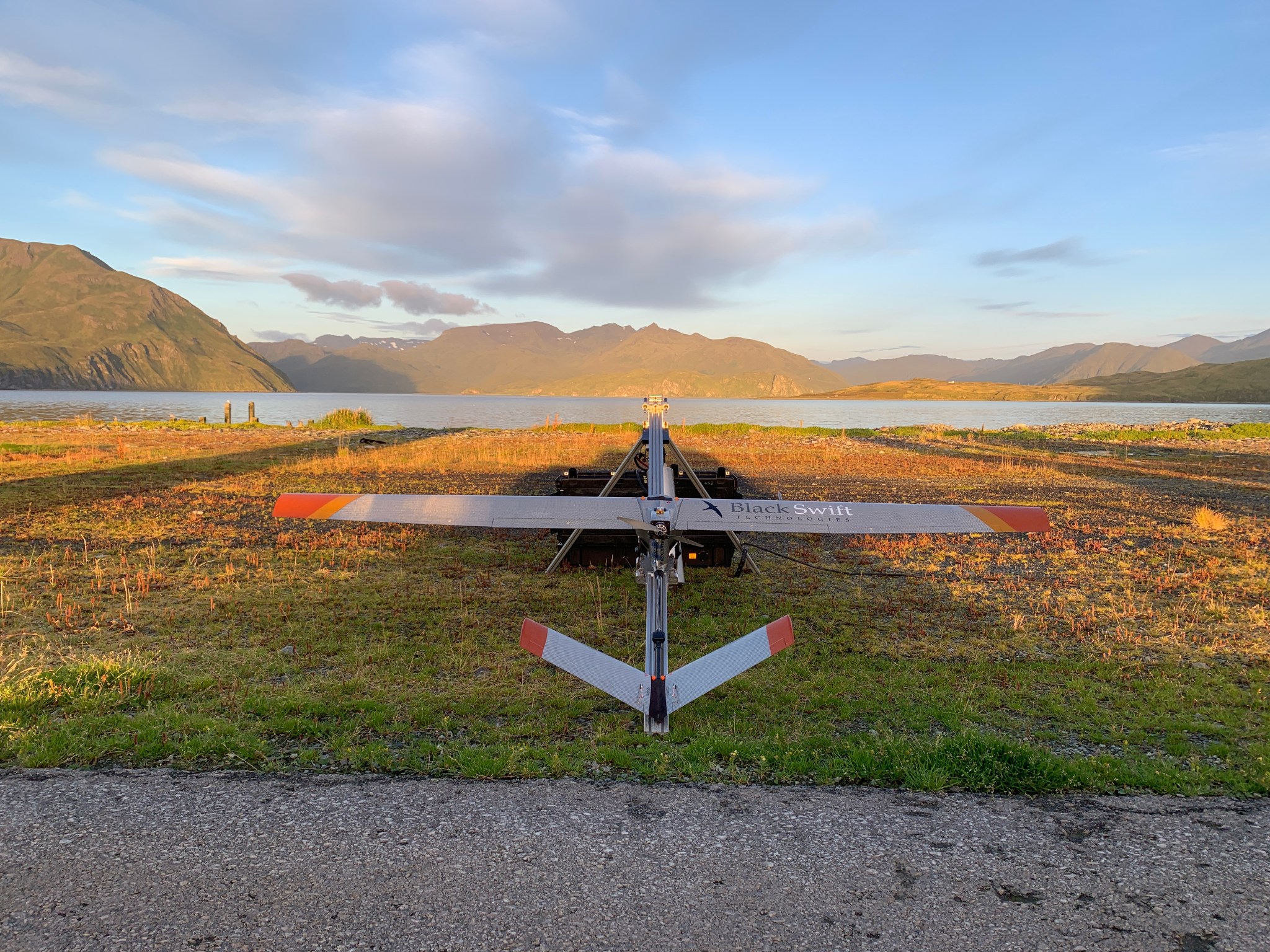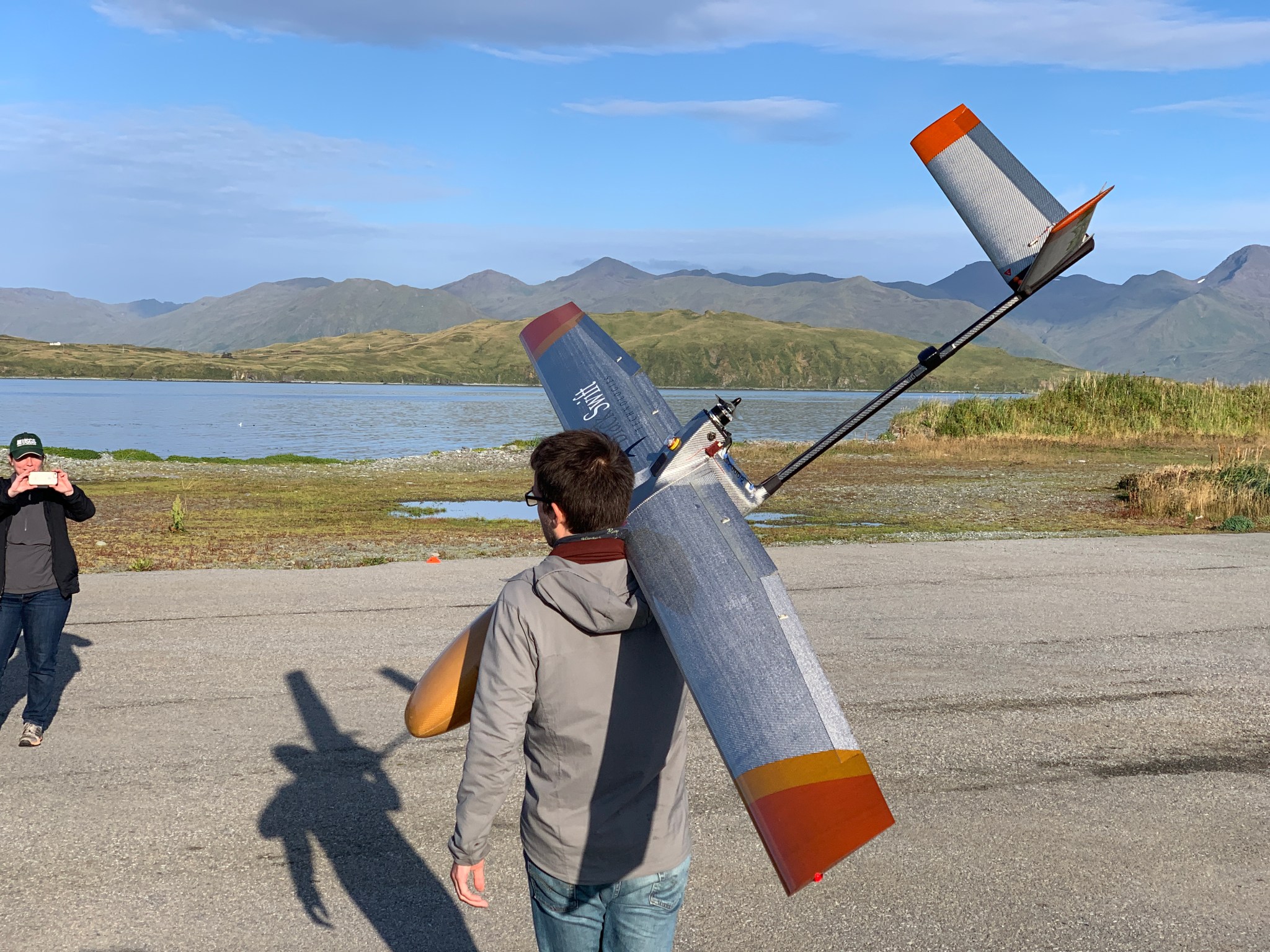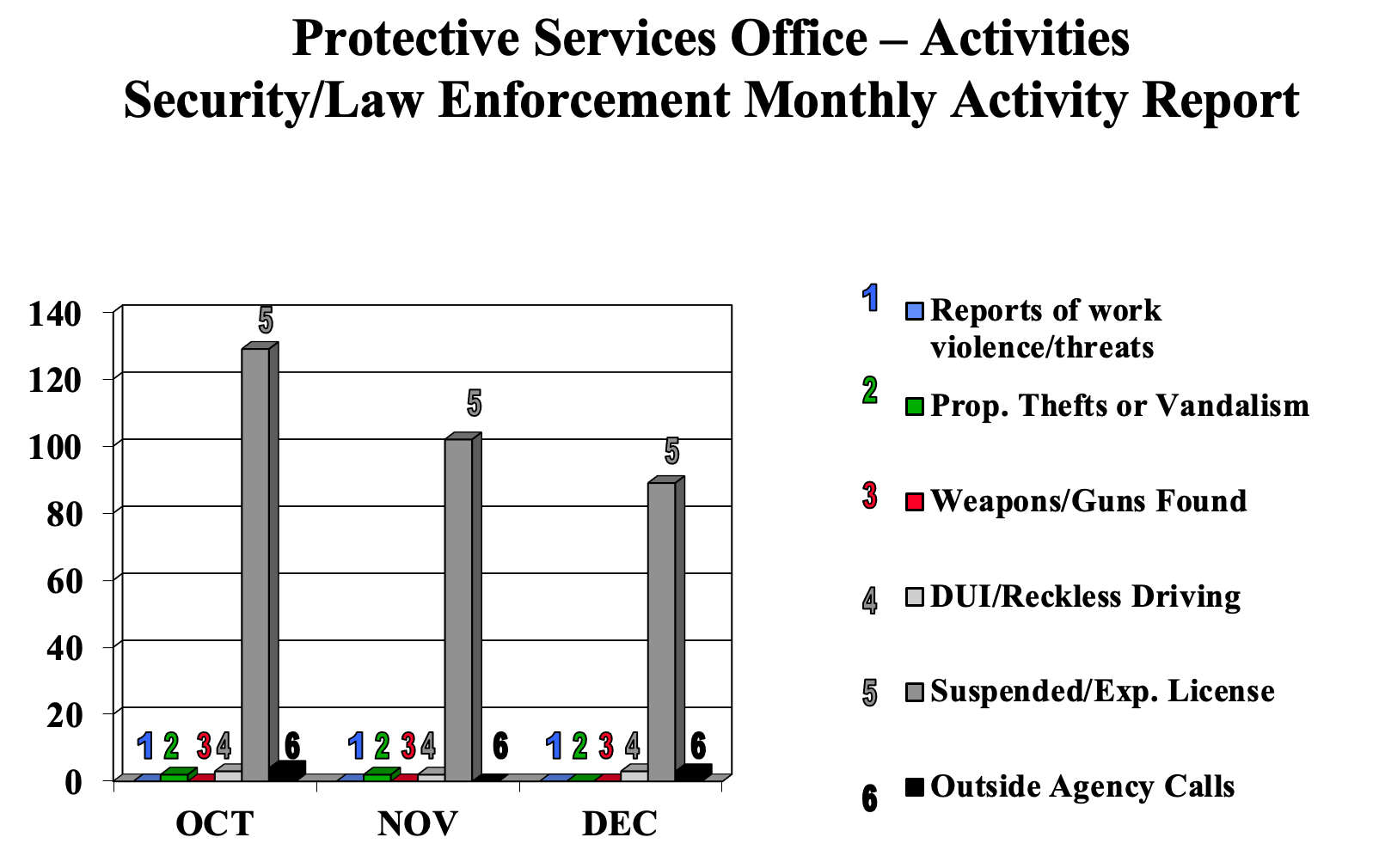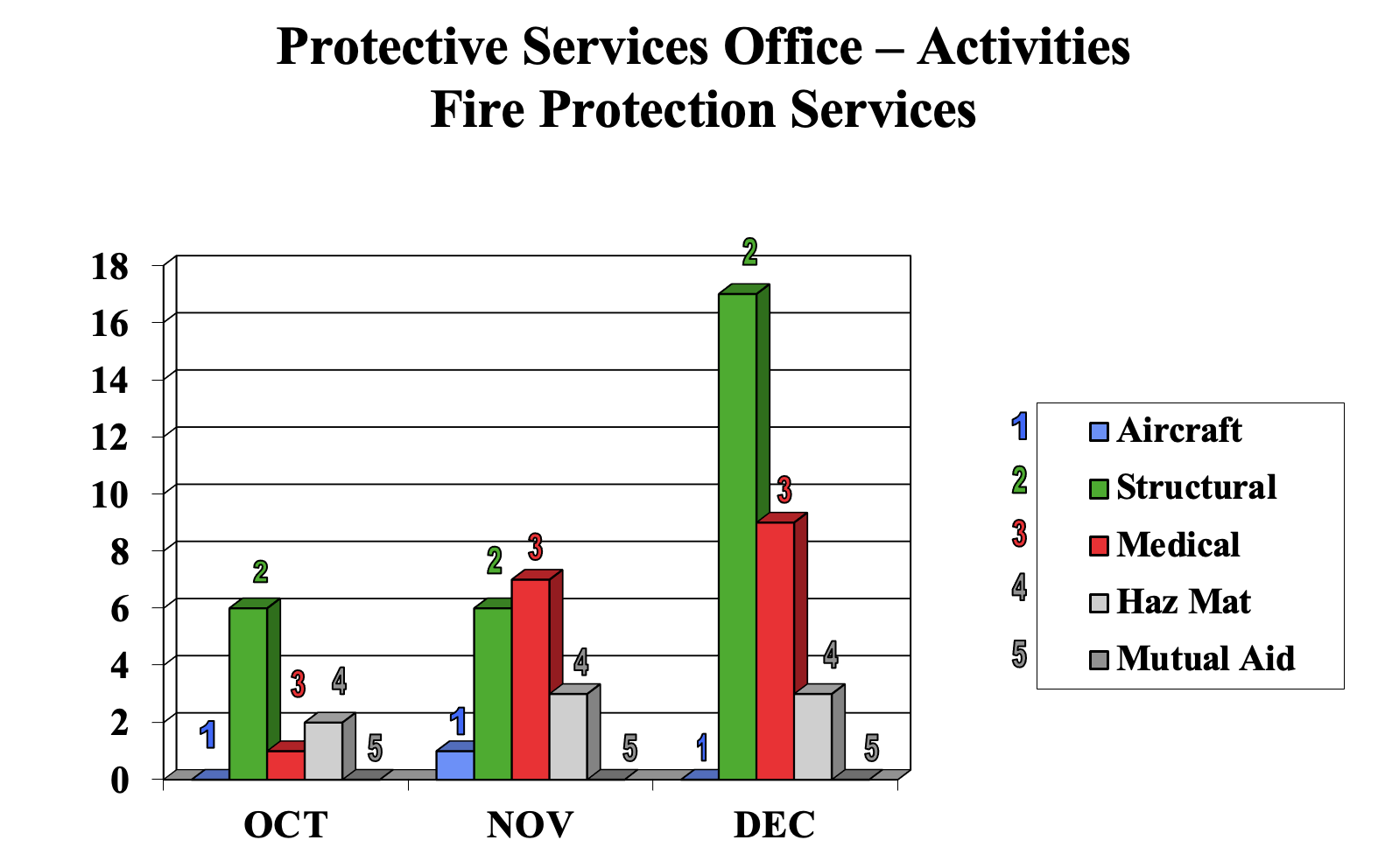Artemis Moon Rover’s Wheels are Ready to Roll
by Abigail Tabor
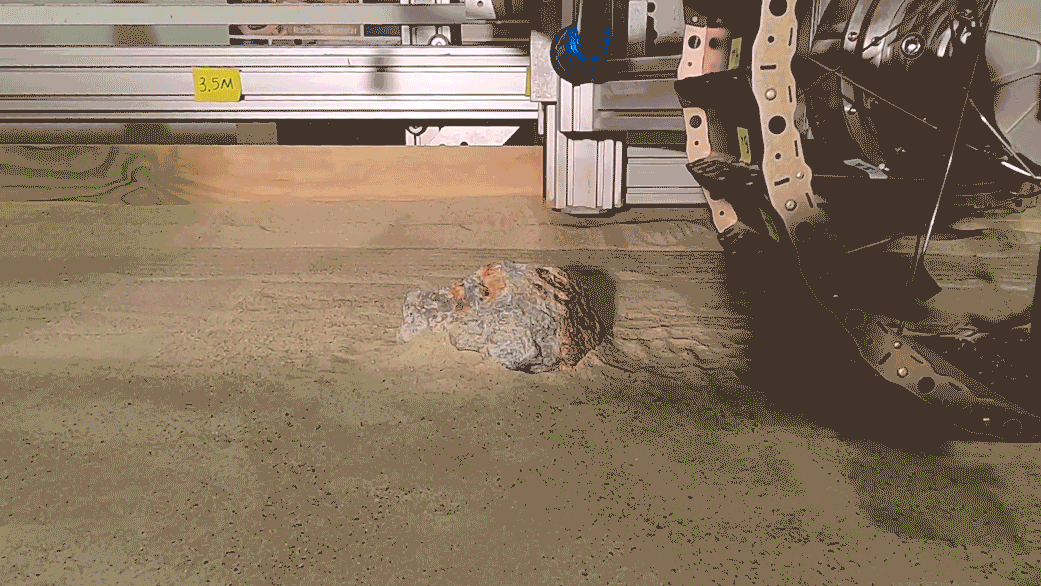
The last thing you need on a trip to the Moon is a flat tire. Luckily, NASA’s water-hunting robot – bound for the lunar surface in 2023 – has no tires! But the all-metal wheels of the Volatiles Investigating Polar Exploration Rover, or VIPER, will have to withstand a whole lot of rocking and rolling as they move across the rugged lunar surface. Before the rover’s design was finalized at its Critical Design Review, the endurance of its wheels had to undergo rigorous testing in the lab. The tests helped solidify plans for the wheels and gave engineers an opportunity to study its movements, in the name of designing even better mobility controls for future rovers.
Using a Moon-mimicking set-up in the lab, the VIPER team tested one of the rover’s wheels over a three-week period. It clocked 25 miles of movement in a high-tech sandbox filled with lunar soil simulant, running through a battery of tests. They simulated slopes, wheel slips, and even the size, shape, and distribution of rocks the rover will encounter on the Moon.
While NASA has considerable experience designing Mars rovers, engineers had to invent new technology for controlling VIPER’s wheels in the unexplored environment of the Moon’s South Pole.
“Lunar regolith is fluffy due to the low gravity and lack of most weathering processes, and the particles are sharp like broken glass,” said Arno Rogg, a rover mobility system engineer at NASA’s Ames Research Center in California’s Silicon Valley. “Rocks of various sizes are scattered everywhere on the Moon’s surface. All that presented some real engineering challenges to designing a lightweight, performant, and robust wheel for the half-ton rover.”
To test if their wheel was ready for the Moon, the team worked with ProtoInnovations of Pittsburgh. The robotics company, which also designed software controls for VIPER’s wheels, is working to improve rover driving ability in unknown and highly variable lunar terrain. Their work is supported by NASA’s Small Business Innovation Research and Small Business Technology Transfer program.
At the ProtoInnovations lab, engineers attached one of VIPER’s wheels to the narrow, 20-foot-long lunar sandbox equipped with measuring devices, cameras, and robotic controls for simulating slipping and sliding. The wheel rolled slowly back and forth under conditions that simulated as closely as possible what it will experience on the Moon.
Well-defined slopes were created in the lunar soil simulant, and the wheel’s tracks were studied after any significant slip. Sensors let the team measure how much the wheel sank into the soil, its traction performance, and how it maneuvered over rocks.
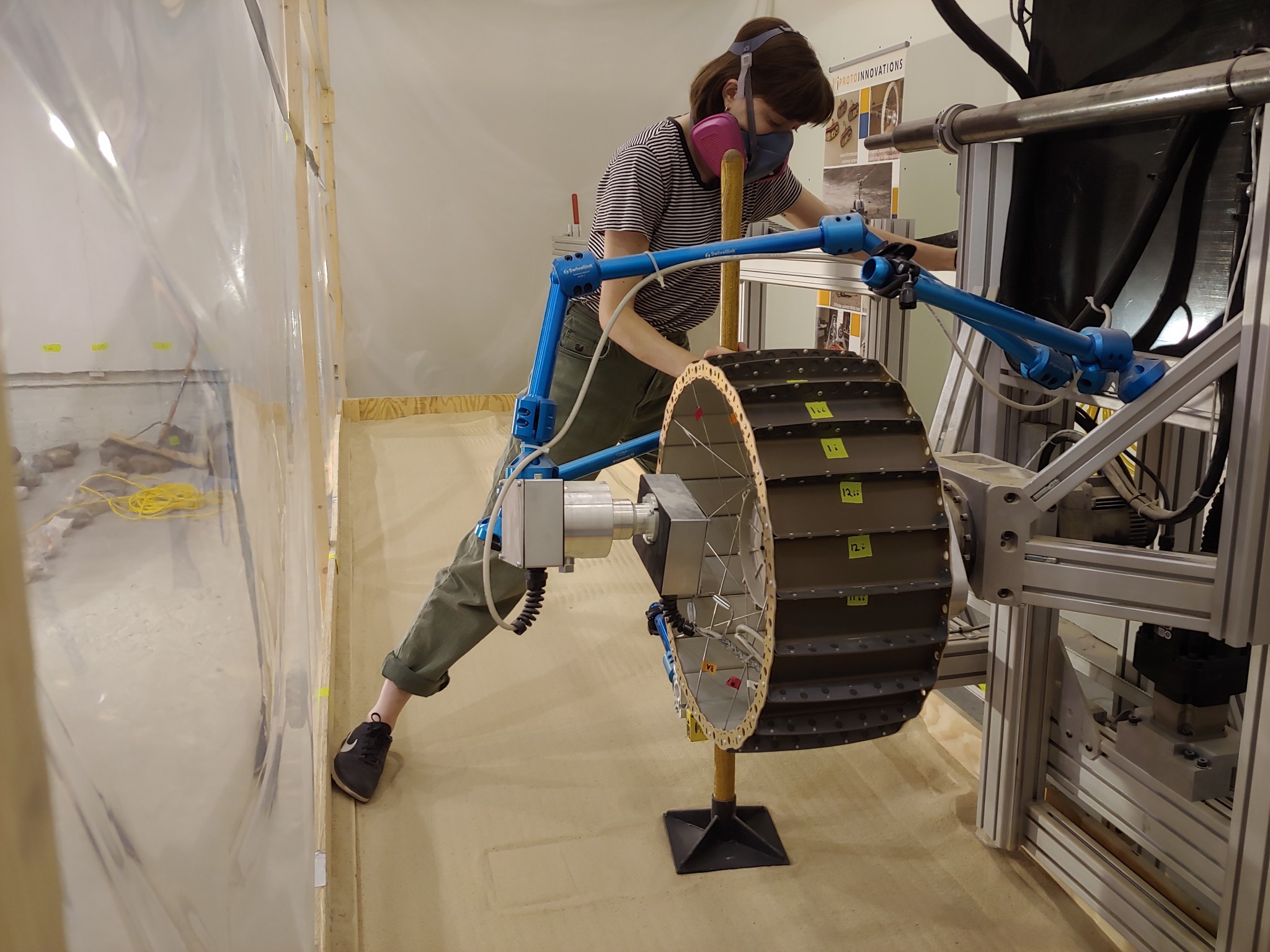
“Simulating on Earth the way the rover will move on the Moon required complicated robotic controls – but that’s what we do,” said Dimi Apostolopoulos, CEO of ProtoInnovations. “Our biggest challenge was picking just the right rocks to stand in for Moon rocks in the test bed.”
Goldilocks Moon Rocks
Actual samples of Moon rocks are, of course, too precious to use for a rover test drive, and the terrestrial stand-ins had to be just right. Too hard or too soft and they’d give a false impression of the challenge the rover will face.
The team secured some of the rare Earth rocks that most closely resemble the Moon’s, and, by scaling down real data about the distribution of lunar rocks, learned how many of what size should be used in the test bed. They also learned how to space them so the wheel experienced hitting rocks the way it will during VIPER’s mission.
In all, the wheel was put through 196 scenarios of different rock shapes, heights, and positions the rover is likely to find on the Moon.
“Overall, the wheel’s performance was excellent,” said Rogg. “At the end of the test, both its physical condition and its behavior – looking especially at its traction – were only slightly degraded compared to when we started the test. By driving the wheel more than twice the distance it’s expected to travel on the lunar surface, we reduced the risk of any premature wheel failure occurring on the Moon.”
Minor weaknesses detected in the wheels during testing were addressed by VIPER’s mechanical design team with improvements that went into the rover’s final design. VIPER will be delivered to the surface of the Moon in late 2023 as part of the Commercial Lunar Payload Services initiative.
Artemis Generation Astronaut Learns to Dig Deep at Ames
by Rachel Hoover
To be an astronaut, you’ve got to dig deeper. This is something Deniz Burnham, a newly selected NASA astronaut candidate, knows well. No, really. At the time of her selection as a NASA astronaut candidate, Burnham had spent more than a decade in the energy industry managing drilling optimization projects and emission reduction strategies for drilling rigs.
She began her career as a field engineer on a remote oil rig in Prudhoe Bay, Alaska, and as a lead field engineer, she was responsible for all aspects of the measurement and logging during drilling operations at drilling rig sites throughout the Arctic.
In 2011, Burnham was selected for a 15-month intensive training and evaluation program in various locations throughout Wyoming and Texas to prepare for an on-site leadership position as a drilling well site leader. She went on to lead onsite operations for about nine years on drilling rigs in Canada, Ohio, and Texas.
She launched her career with NASA when she interned in the Drilling and Automated Sample Acquisition Lab at NASA’s Ames Research Center. There she worked alongside engineers and roboticists exploring the edge of what’s possible in drilling automation and acquiring samples for science missions on the surface of other planets or the Moon.
Burnham served as a field engineer supporting Ames-led tests of drilling and sampling prototype instruments, as part of the Life-detection Mars Analog Project’s deployment at the Rio Tinto, Spain, Mars-analog site in the summer of 2017.
The experience she gained at Ames will be put to use as she reports for duty at NASA’s Johnson Space Center in Houston in January 2022. The new astronaut candidates will begin two years of training, which for Burnham includes honing her complex robotics skills that one day could be used to acquire scientific samples and local resources while on deep space missions to the surface of destinations in our solar system, like the Moon and Mars.
Rodent Research – For Human Health, in Space and on Earth
by Abigail Tabor
In space, far from the strong tug of Earth’s gravity, astronauts experience a number of changes that could affect their health. Understanding these effects of weightlessness, as well as how to treat them, will be vital to a successful future for humans in space. Since the environment of space alters multiple, interacting biological systems – including bones, muscles, the heart, blood flow, and the immune system – sometimes it is better to study everything at once in the entire organism. This can be achieved by working with research model organisms, such as mice and other rodents. Given their genetic similarity to humans, studying mice allows scientists to gain insight into the workings of the human body. The rodents’ faster development and shorter life span reveal effects of microgravity on a shorter timescale, and the chance to fly dozens of small rodents on each mission yields much more data from which to draw scientific conclusions. To help answer fundamental questions about human health – both for Earth and in space – NASA’s Ames Research Center, in California’s Silicon Valley, developed the Rodent Research Hardware System. Making use of its equipment and protocols, scientists are able to partner with NASA to conduct a variety of experiments in the unique laboratory of the International Space Station, without the need to develop and test a new system for each mission. The Ames team built the new system based upon their decades-long experience of conducting rodent research aboard the space shuttle. Today’s system makes longer-term basic and applied research possible in space.
In space, far from the strong tug of Earth’s gravity, astronauts experience a number of changes that could affect their health. Understanding these effects of weightlessness, as well as how to treat them, will be vital to a successful future for humans in space.
Since the environment of space alters multiple, interacting biological systems – including bones, muscles, the heart, blood flow, and the immune system – sometimes it is better to study everything at once in the entire organism. This can be achieved by working with research model organisms, such as mice and other rodents. Given their genetic similarity to humans, studying mice allows scientists to gain insight into the workings of the human body. The rodents’ faster development and shorter life span reveal effects of microgravity on a shorter timescale, and the chance to fly dozens of small rodents on each mission yields much more data from which to draw scientific conclusions.
To help answer fundamental questions about human health – both for Earth and in space – NASA’s Ames Research Center, in California’s Silicon Valley, developed the Rodent Research Hardware System. Making use of its equipment and protocols, scientists are able to partner with NASA to conduct a variety of experiments in the unique laboratory of the International Space Station, without the need to develop and test a new system for each mission.
The Ames team built the new system based upon their decades-long experience of conducting rodent research aboard the space shuttle. Today’s system makes longer-term basic and applied research possible in space.
How Does It Work?
The three major components of the Rodent Research Hardware System are used for different stages of the mission. The animals make the trip to and from the space station in the transporter. Upon arrival, the animal access unit allows the astronaut crew to transfer them safely into the third module, the habitat unit, which provides long-term housing for the rodents.
The experiments that take place on the space station examine how microgravity affects the animals and provide information relevant to human spaceflight, through discoveries in basic biology and new knowledge that can help treat human diseases on Earth. Working together, NASA and the Center for the Advancement of Science in Space, or CASIS, selected and prepared spaceflight experiments, led by principal investigators from institutions around the U.S., using the rodent research hardware system.
To maximize the knowledge gained from these missions, unused tissue samples from the experiments will be shared with additional researchers who will use them for even more studies. Data from the spaceflight investigation will also be made available to the public via NASA’s GeneLab data system. The GeneLab data system is a collaborative workspace and set of tools to analyze huge amounts of space biology data, which allows the opportunities for discovery to be multiplied many fold.
Rodent Research-1
This important first mission in NASA’s rodent research project launched in 2014. It proved that the hardware system was effective and safe to use in space, and that critical research operations could be carried out by the space station crew. This first study showed that mice transported on the SpaceX Dragon capsule, then living in the habitat on the space station for a month, were both healthy and active. Rodent Research-1 also included a CASIS commercial research investigation dedicated to the study of muscle loss, or atrophy.
Learn more:
For researchers:
- NASA Ames Space Biosciences division’s technical experiment page
- International Space Station technical experiment page
Rodent Research-2
The primary objective of RR-2, launched in 2015, was to examine the effects of the space environment on the musculoskeletal and neurological systems of mice as model organisms of human health and disease. This project may help scientists discover ways that therapies could act on muscle- and bone-related diseases, which could facilitate the development of new treatments.
For researchers:
- NASA Ames Space Biosciences division’s technical experiment page
- International Space Station technical experiment page
Rodent Research-3
For the third mission, launched in 2016, CASIS formed a commercial partnership with the pharmaceutical company Eli Lilly and Company, of Indianapolis, Indiana. Their goal was to evaluate a potential new treatment for skeletal muscle wasting and weakness. Working with NASA, the researchers assessed its ability to prevent these conditions in mice exposed to long-duration spaceflight. Rodent research models have made it possible to study serious diseases involving muscle atrophy, and even age-related weakness. Conducting this study during spaceflight provided the researchers with the rare opportunity to expose all the muscles of an organism to conditions that will produce atrophy – something not easily achieved on Earth.
Learn more:
For researchers:
- NASA Ames Space Biosciences division’s technical experiment page
- International Space Station technical experiment page
Rodent Research-4
The fourth mission to use NASA’s facility for conducting rodent research aboard the International Space Station launched in April 2017 and focused on bones: how they grow and heal, and what effect microgravity has on these processes. The results will have applications for astronauts and future space travelers, as well as for patients with severe injuries here on Earth.
For researchers:
- NASA Ames Space Biosciences division’s technical experiment page
- International Space Station technical experiment page
Rodent Research-5
The topic of study on this mission was bone tissue loss – a challenge for the health of astronauts, as well as for people on Earth suffering from osteoporosis. For the experiment, a group of mice was launched to the space station in June 2017. Half of them returned to Earth one month later, while the other half remained in space for a full two months. This allowed the researchers – a team based at University of California, Los Angeles – to study the effects of a potential treatment for bone loss, and how the body readapts to Earth conditions after an extended stay in microgravity.
For researchers:
- NASA Ames Space Biosciences division’s technical experiment page
- International Space Station technical experiment page
Rodent Research-9
For Rodent Research-9*, NASA’s rodent research science team, based at NASA Ames, selected three studies directly in support of NASA exploration science goals, with complementary objectives allowing them to share a single mission. Examining the effects of microgravity on blood vessels in the brain and eye, and on cartilage loss in joints, this mission marks a return to fundamental space research that paves the way for applied studies on later missions. The results could improve understanding of vision loss and eye disorders, and of the way arthritis develops in patients whose mobility is impaired.
* A shift in the order of experiments scheduled to fly to the International Space Station resulted in RR-9 following directly on RR-5.
Learn more:
- NASA story: Rodents Help NASA Take the Next Step to Mars
For researchers:
- NASA Ames Space Biosciences division’s technical experiment page
- International Space Station technical experiment page
Rodent Research-6
The topic of muscle wasting, or atrophy, was studied in Rodent Research-6. This is a problem for astronauts, brought on by microgravity, and also for many patients on Earth in different situations of disease or limited exercise. Working with NASA and CASIS, researchers from the pharmaceutical company Novartis, NanoMedical Systems and Houston Methodist Research Institute evaluated a new system for administering a drug that might be able to counteract this effect. A tiny chip, implanted under the skin, delivers a constant, low dose of the drug being tested, helping also to avoid the known side effects of its long-term use at high doses.
For researchers:
- NASA Ames Space Biosciences division’s technical experiment page
- International Space Station technical experiment page
Rodent Research-7
Whole communities of microorganisms live on and in our bodies, and they play an important role in human health. Known collectively as the microbiome, these communities are likely to be affected by the unique conditions of space, including microgravity. Rodent Research-7 looked at how the reduced-gravity environment of the International Space Station affects the community of microorganisms in the gut and what impact this has on multiple systems in the body. The results will show scientists how they might create solutions to keep astronauts safe and healthy on long-duration spaceflight missions and improve the treatment of gastrointestinal, immune, metabolic and sleep disorders on Earth.
For researchers:
- NASA Ames Space Biosciences division’s technical experiment page
- International Space Station technical experiment page
Rodent Research-14
Rodent Research-14 will study how microgravity affects the biological circadian rhythm – the body’s internal clock – and the tissues of key organs, including the colon, heart, lung, liver, kidney and hypothalamus. This investigation also advances research on the most common liver disease in humans, which recent discoveries have shown is connected to the body’s daily clock program.
For researchers:
Rodent Research-10
Healthy bones rely on a process in which bone tissue is continuously broken down and built back up. Rodent Research-10 investigated the biological mechanisms underlying deficits in bone regeneration caused by disuse on Earth and microgravity during spaceflight – an important health risk for astronauts. Better understanding of a gene thought to “put the brakes on” bone tissue repair – called Cdkn1a – may become the basis for designing new treatments to counter tissue degeneration in space and lead to novel therapeutic strategies to address degenerative bone conditions on Earth.
For researchers:
- NASA Ames Space Biosciences division’s technical experiment page about Rodent Research-10
- International Space Station technical experiment page about Rodent Research-10
Rodent Research-23
Some astronauts on long-duration missions experience physical changes to the eyes that lead to the need for glasses. Rodent Research-23 studied the effects of spaceflight, specifically on the structure and function of the arteries, veins, and lymphatic vessels needed to maintain vision. The information gathered from this study will help scientists develop effective countermeasures to protect future astronauts from spaceflight-associated eye conditions and may shed light on eye diseases in people on Earth.
For researchers:
- NASA Ames Space Biosciences division’s technical experiment page about Rodent Research-23
- International Space Station technical experiment page about Rodent Research-23
Rodent Research-18
Astronauts can experience eye problems after returning from space, along with headaches and blurred vision. Rodent Research-18 investigates how spaceflight affects visual function, examining changes in the vascular system of the retina and the ways specific cells interact. A better understanding of the process and biological mechanisms behind these effects could support development of more effective countermeasures. This mission will specifically test metalloporphyrin, an antioxidant that may protect against the irreversible oxidative damage observed in eye structure and function during and after spaceflight. This investigation could also lead to new therapies for neurovascular-related eye diseases and retinal degeneration in people on Earth.
NASA Scientists Named AAS 2022 Fellows – Including Farid Salama of NASA Ames
by Rob Gutro
Four individuals with NASA affiliations have been named 2022 Fellows by the American Astronomical Society (AAS). AAS is a major international organization of professional astronomers, astronomy educators, and amateur astronomers.
NASA awardees from NASA’s Ames Research Center, Moffett Field, California, NASA’s Goddard Space Flight Center, Greenbelt, Maryland and NASA’s Jet Propulsion Laboratory, Pasadena, California are among the 23 members being recognized for extraordinary achievement and service. They are being recognized for original research and publications, innovative contributions to astronomical techniques or instrumentation, significant contributions to education and public outreach, and noteworthy service to astronomy and to the Society itself.
Farid Salama of NASA Ames was recognized for his significant contributions to scientific advances in astrophysics and astrochemistry, and for his service to the community through the creation of the Laboratory Astrophysics Division of the AAS.
Salama pioneered the study of interstellar and planetary molecules in the lab by recreating astrophysical environments in special facilities developed to support NASA space missions. He couples his work in laboratory astrophysics and astrochemistry with astronomical observations to survey and identify new molecular species in space. He has also contributed to exposure experiments on the International Space Station to study how laboratory analogs of interstellar and planetary materials change under near-Earth irradiation.
Salama joined NASA in 1988 and today leads the Cosmic Simulation Chamber facility at Ames, which uses state-of-the-art instruments to simulate and monitor space conditions in the lab. He has made a key contribution to the recognition of his field around the world through the creation of the Laboratory Astrophysics Division of the AAS and the Laboratory Astrophysics Commission of the International Astronomical Union.
Judith T Karpen of NASA Goddard was honored for her sustained contributions to understanding the formation and dynamics of the solar corona and wind.
Karpen is a research astrophysicist and Chief of the Space Weather Laboratory in the Heliophysics Division. She received her Bachelors of Science in Physics (Honors) from the University of Michigan in 1973 and her PhD in Astronomy from University of Maryland in 1980, followed by a postdoctoral position with the Solar Physics Branch, Space Science Division, NRL. From October 1982 until September 1984, she was a staff scientist with Berkeley Research Associates, working at the Laboratory for Computational Physics, NRL. From October 1984 to July 2008 she was a research physicist in the Solar-Terrestrial Relationships Branch of the Space Science Division of the Naval Research Laboratory. She joined the Space Weather Laboratory in July 2008.
Her primary research interests include analytical and numerical modeling of dynamic solar and heliospheric phenomena, and applications of plasma physics and magnetohydrodynamics to solar and heliospheric activity. Her current research is focused on solar prominences, coronal mass ejections/eruptive flares, and magnetic reconnection.
Lucy A. McFadden, retired from NASA Goddard, was awarded the honor for her research incorporating both ground- and space-based observations of near-Earth asteroids and comets; her long service to the AAS; and her commitment to the organization of educational opportunities in science and technology.
McFadden worked on space missions dedicated to asteroid and comet studies. From 1992-2010, McFadden was a research professor at the University of Maryland, College Park, where she conducted research related to small bodies in the solar system. She became a co-investigator on NASA’s Dawn mission to asteroid 4 Vesta and the dwarf planet Ceres; NASA’s Deep Impact and its extended mission EPOXI (Deep Impact Extended Investigation), which successfully encountered comets Tempel 1 and Hartley 2. Prior to that, McFadden was a member of the science team for NASA’s Near-Earth Asteroid Rendezvous mission, which orbited the Earth-approaching asteroid named 433 Eros and landed a spacecraft on its surface in 2001.
In 2010, McFadden came to NASA’s Goddard Space Flight Center to lead the center’s higher education and university programs. While at Goddard, McFadden supported the development of future solar system missions. In August 2015 she was elected as the Vice-Chair of the American Astronomical Society’s Division of Planetary Sciences and served as it Chair the following year. McFadden assumed emerita status in January 2017.
George Helou of Caltech and NASA’s Jet Propulsion Laboratory, Pasadena, California. He received the recognition for significant contributions to our understanding of the infrared universe and enabling community access to data from Spitzer, Herschel, Planck, and other missions. Since 1983, Helou has worked at Caltech and with NASA. Currently, he is the executive director of IPAC and a research professor of physics at Caltech.
Helou’s first NASA mission was the pioneering Infrared Astronomical Satellite (IRAS), which became the first space telescope to map nearly the whole sky at infrared wavelengths. As deputy director of the Spitzer Science Center, Helou designed science operations for Spitzer. The Spitzer team at IPAC played a key role in the discovery of seven Earth-sized planets around the TRAPPIST-1 star, some of which may have liquid water and conditions hospitable to life. Other highlights of Helou’s long and impactful career include being the first to describe the infrared colors of galaxies and explain them as the result of emission from populations of interstellar dust warmed up by stars. His research has also elucidated critical aspects of the physics behind the formation of galaxies and their evolution over billions of years.
The 2022 AAS Fellows now represent the third class recognized for enhancing and sharing humanity’s scientific understanding of the universe through personal achievement and extraordinary service to the astronomical sciences and to the AAS.
The American Astronomical Society, established in 1899, is a major international organization of professional astronomers, astronomy educators, and amateur astronomers. Its membership of approximately 8,000 also includes physicists, geologists, engineers, and others whose interests lie within the broad spectrum of subjects now comprising the astronomical sciences. The mission of the AAS is to enhance and share humanity’s scientific understanding of the universe as a diverse and inclusive astronomical community, which it achieves through publishing, meetings, science advocacy, education and outreach, and training and professional development.
For more information, see the AAS Fellows page, the AAS Fellows FAQ page, and the inaugural Fellows class press release.
For more about AAS Fellows, visit: https://aas.org/press/aas-names-23-new-fellows-2022.
Volcano-observing Drone Flights Open Door to Routine Hazard Monitoring
by Abigail Tabor
The ability to provide a “volcano forecast” could help reduce the significant health, safety, and even economic impacts of eruptions; they regularly disrupt aviation and the global supply chain we depend on. Last fall, circling the summit of an active volcano, a small aircraft moved us toward a future where remote but hazardous volcanoes are consistently monitored for signs an eruption could be brewing.
This unmanned aircraft system, or UAS, commonly known as a drone, was specially designed for scientific uses in challenging environments – and then upgraded to become an airborne volcano-observing platform. With flights to Makushin Volcano in Alaska’s Aleutian Islands in September 2021, a group of federal scientists and industry engineers demonstrated the UAS could successfully fly without its pilots’ eyes on the aircraft. And that opens new possibilities for monitoring volcanoes and other hazards worldwide.
Out-of-Sight Flights, Years in the Making
Sending researchers on foot or piloted aircraft to survey volcanoes up close can be dangerous and costly. It’s also just not realistic to do for a large number of volcanoes on a regular basis. But a sophisticated UAS could do the job, if it could fly beyond the visual line of sight of its operators. The capability, known by the acronym BVLOS, marks a kind of threshold that, once passed, will make many more applications possible.
At NASA, using UASs for up-close monitoring of volcanoes was first demonstrated by researchers from the agency’s Ames Research Center in California’s Silicon Valley. In 2013, they collected science data by flying small, fixed-wing drones over Turrialba Volcano in Costa Rica.
Later, a long-term collaboration between NASA and Black Swift Technologies of Boulder, Colorado, resulted in the S2 UAS, which made the recent groundbreaking flights in Alaska.
“We needed it to be really rugged, to withstand flying in the turbulent conditions and corrosive gases around volcanoes,” said Florian Schwandner, director of the Earth Sciences division at Ames and an early member of the project. “We also developed a gas-sensing payload the UAS could carry to look for signs of volcanic unrest.”
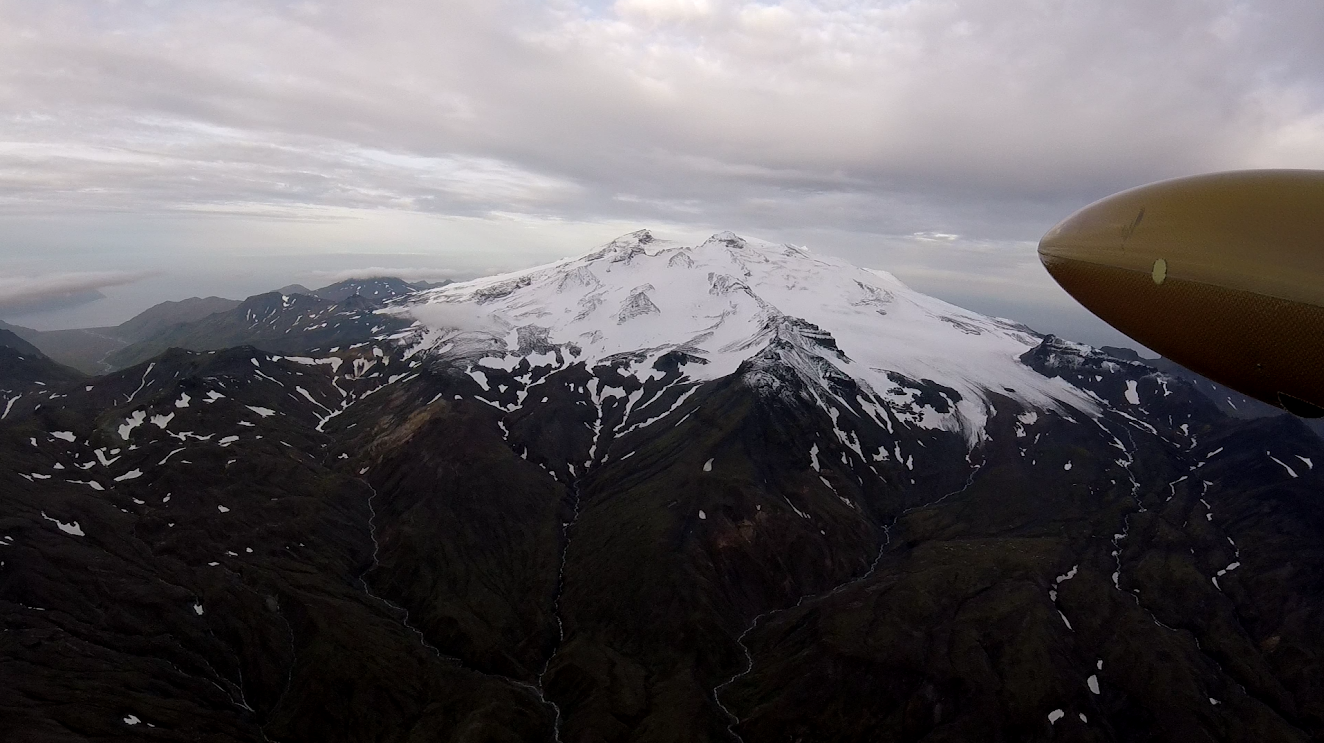
When the U.S. Geological Survey joined the partnership a few years in, they brought an even more capable payload to detect additional gases and collect visual and thermal images.
The development path that led to the S2’s flight demonstration was supported in part by NASA’s Small Business Innovation Research and Small Business Technology Transfer program, whose management office is located at Ames. The program funds small businesses and research institutions for the research, development, and demonstration of innovative technologies with significant potential for successful commercialization. For all drones, scientific and otherwise, achieving safe BVLOS flight is the next big step toward widespread commercial use.
To the Summit and Back
To demonstrate the S2 could fly this way – with no eyes on the aircraft, only on monitors displaying its flight path – one major requirement was a plan for integrating the UAS safely into the airspace. The Flight Operations division at Ames worked with the Federal Aviation Administration and Black Swift to develop the operations necessary to fly safely out of sight.
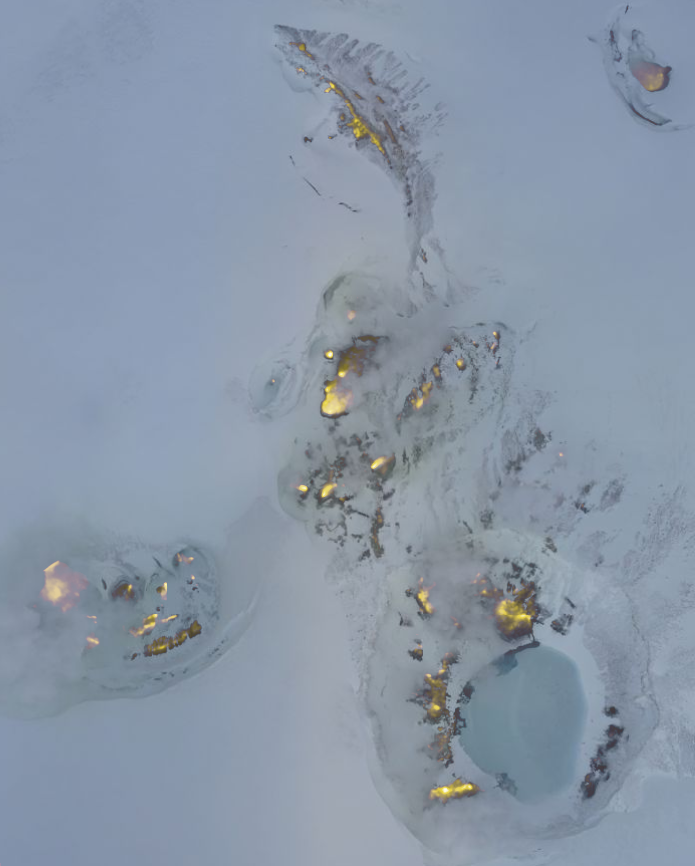
During the deployment, the team flew four BVLOS missions to Makushin Volcano, 15 miles away. The S2 relied on its autonomous systems and a programmed flight plan to reach the summit, where the aircraft captured high-resolution visible-light and thermal images. The team’s scientists confirmed they could use these to detect changes in physical features that indicate volcanic activity changing underground. The flights also demonstrated the capacity of sensors aboard the aircraft to detect gases that may signal changes in activity brewing in the volcano’s depths.
“Our goal is to continue to push the capabilities of UASs to provide valuable insight into natural phenomena,” said Jack Elston, CEO of Black Swift Technologies. “This deployment demonstrated some state-of-the-art automation technologies we think will help greatly simplify what are now very difficult UAS operations. One of the most exciting results was to see our custom autopilot system determine when conditions had become too dangerous and turn back.”
A Future of Routine Flights
The proven ability to fly safely beyond range of a pilot’s sight with this scientific platform paves the way for more routine operations.
“Working with NASA and Black Swift, our scientists believe we can use UASs to help authorities warn communities about the onset of dangerous volcanic eruptions, and many other hazards that now take us by surprise,” said Jonathan Stock, director of the USGS National Innovation Center, which helped fund and coordinate the September 2021 flights. “With this tool, we could routinely monitor even remote volcanoes for activity and respond to eruption events – a gamechanger for the safety of both our scientists and the communities around these geologic hazards.”
This partnership between government and small business could make BVLOS drone flights possible for tracking and responding to a diverse suite of hazards around the world, including droughts, floods, wildfires, and many more.
This work is the product of a long-term partnership between NASA, Black Swift Technologies LLC, and USGS. Funding for the Makushin Volcano project was provided by the USGS National Land Imaging Program and the USGS National Innovation Center, working with NASA’s SBIR/STTR program to leverage NASA’s original investment in the aircraft prototype. USGS also funded the NASA Ames Flight Operations division through an interagency agreement to provide airworthiness reviews and airspace integration coordination with the FAA.
What are NASA’s Technology Educational Satellites?
by Frank Tavares
NASA’s TechEdSat series of technology demonstrations aims to bring small payloads back to Earth or to the surface of Mars – while pushing the state of the art in a variety of CubeSat technologies and experiments.
TechEdSat is a series of collaborative projects and missions that pairs college and university students with NASA researchers to evaluate new technologies for use in small satellites, or CubeSats. Students do the hands-on work – designing, building, and testing CubeSat spacecraft systems and analyzing the results – for each flight mission, under mentorship of engineers at NASA’s Ames Research Center in California’s Silicon Valley.
CubeSat technologies enable the efficient use of small satellites for a variety of research and technological purposes, and the mission focus of the TechEdSat series is bringing small payloads from orbit back to Earth. Advancing the entry, descent, and landing, or EDL, systems for CubeSats – and sharing new technology with the spaceflight community – will allow more researchers access to cost-effective flight opportunities, leading to more technology testing and science in space.
For example, being able to send CubeSats from orbit to Earth could provide on-demand delivery of samples or hardware from the International Space Station or future space platforms. This technology could also allow future small spacecraft missions to reach the surface of Mars or other worlds in our solar system.
Some of the systems used to control the EDL of a spacecraft are somewhat like driving a car: they use braking, steering, and navigation systems to reach home. Unique to spaceflight is the need to mitigate the intense heating that comes from speeding though the atmosphere.
So far, all of the TechEdSat spacecraft have been intentionally burned up in Earth’s atmosphere at the end of their missions. These initial missions run tests at altitudes up to over 250 miles above Earth, working out the kinks of the first phases of EDL systems to make sure that the systems work and are safe. The ultimate goal is to develop a complete EDL system and eventually to land a CubeSat at a defined location on Earth.
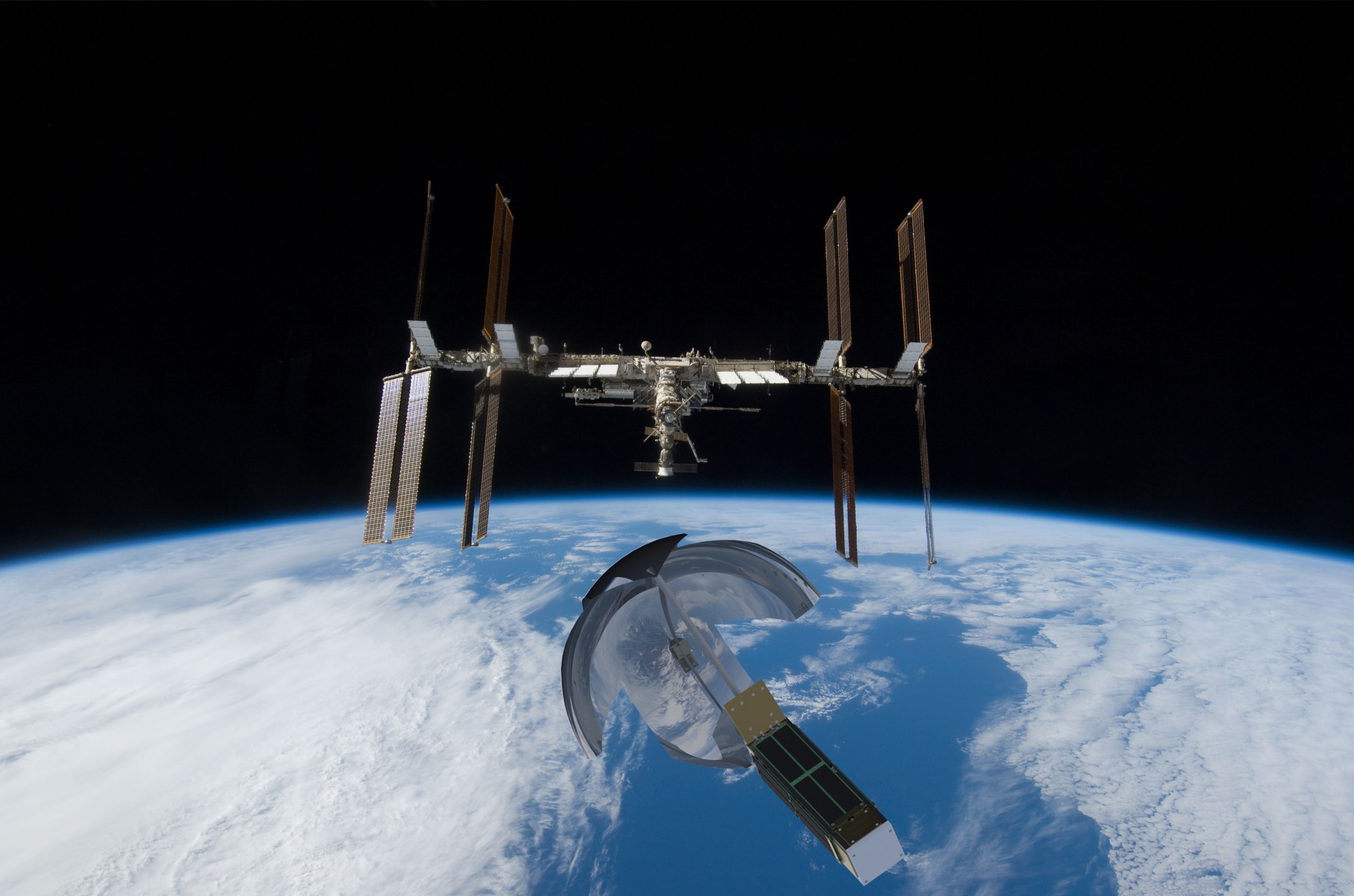
A variety of technologies are developed through TechEdSat missions, including the exo-brake. This new technology is a “wing” that can slow a spacecraft down and eventually allow it to return to the Earth, or potentially other worlds like Mars, in a controlled way. Foil constructions, using plastic and metal materials, origami-folded into designs that can expand, reshape, and be controlled by commands sent via space-to-space communication links. To facilitate this, the TechEdSat series is also advancing innovative solutions for communications in low-Earth orbit.
Current communications methods are expensive and too bulky for CubeSats, and the new technologies could allow researchers to extend these concepts to lunar and planetary missions, extending the capabilities of small satellites past low-Earth orbit. Also, recent innovations have allowed for much larger onboard processing power. Using graphic processor units that use electric analog circuits to mimic the human nervous system, known as or neuromorphic processors, adds much more “thinking” capability in these small boxes.
The next evolution of the TechEdSat project is the Nano-Orbital Workshop platform, or NOW, which includes collaboration from industry and other government organizations all working together at a rapid pace with the ability to have a high cadence of flight missions.
The ability to test these new technologies in space at such a low cost is made possible by the standardized systems inherent to the CubeSat concept, including the system that ejects them into space from larger spacecraft. The CubeSat platform has standard sizes for both satellites and their interfaces with deployment mechanisms, like a household plug and socket. Special dispensers help the CubeSats fit with the deployer on the space station and other vehicles. CubeSats come in various sizes, with the basic unit coming in a cube, roughly the size of a square tissue box and able to fit in your hand. CubeSats use a standard sizing scheme, where each 10-centimeter cube is considered one unit, or U. TechEdSat’s first mission was 1U in size, with recent missions expanding up to 6U.
Ames’ Role
NASA’s Ames Research Center in California’s Silicon Valley is home to the TechEdSat team, chartered to prototype novel solutions to technical spaceflight challenges by providing access to space. Student interns, young professionals, and volunteers supply labor and ingenuity and receive invaluable hands-on experience with real spaceflight hardware. By taking advantage of low-cost flights on balloons, sounding rockets, and orbital opportunities for small satellites, the TechEdSat series makes testing innovative technology in space more accessible. Satellites from the series have been launched directly from rockets, or with a stopover on the International Space Station.
Learn more:
- NASA podcast: Marc Murbach Talks About Building Small Cube Satellites (2017)
- NASA landing page: Ames Engineering Directorate
TechEdSat Missions
TechEdSat-1
TechEdSat-1 launched on the Japanese H-2 vehicle from the Tanegashima Launch Center July 21, 2012, and deployed from the International Space Station Oct. 4, 2012. The 1U CubeSat was the first U.S. CubeSat deployment from the space station. The mission evaluated space plug-and-play avionics, a way for researchers to use standardized systems to facilitate rapid software integration. The safety protocols followed for the jettison from the space station proved invaluable for future missions, and became standard practices for the space station as a launch platform. Communications were performed using amateur-band ultra high frequency receivers on the ground. The CubeSat functioned as intended for approximately six months before atmospheric re-entry May 5, 2013.
For researchers:
- TechEdSat-1 space station experiment page: Technology Education Satellite
- NASA publication: CubeSat 101: Basic Concepts and Processes for First-Time CubeSat Developers (2017)
TechEdSat-2
The TechEdSat-2 mission was launched on the first Antares rocket flight April 21, 2013, and deployed within a day. It wasn’t a standalone satellite, launching alongside Ames’ first PhoneSats. The primary experiment was to determine the utility of using the Iridium satellite constellation as the primary communication link for future nanosatellites, instead of using traditional ground stations. It proved that by using the “ground stations in the sky,” the command-and-control events for future nanosatellites could be greatly improved. The experiment was successfully concluded within 36 hours. Due to the elliptical orbit, the CubeSat re-entered the atmosphere shortly after.
TechEdSat-3p
TechEdSat-3p, weighing 11 pounds, was launched Aug. 3, 2013, on the Kounotori 4 flight mission from the Japanese Aerospace Exploration Agency. It was the first 3U CubeSat deployed from the space station in November 2013. This mission successfully performed the first passive flight test of an exo-brake. This real data could now be compared to calculated aerodynamic models for the very low-density thermosphere. It was the first time an Arduino-based processor was used in the series. The processor was found to function very well in the space radiation environment. Also, more data was acquired over different altitudes for the two-way Iridium satellite constellation communication link – thus adding confidence of this protocol for future CubeSats. The mission re-entered Earth’s atmosphere Jan. 16, 2014.
Learn more:
- NASA story: NASA Launched First Exo-brake Parachute from International Space Station (2013)
For researchers:
- TechEdSat-3p space station experiment page: The Development of On-Demand Sample Return Capability (SPQR)
TechEdSat-4
TechEdSat-4 launched July 13, 2014, weighing 11 pounds and 3U in size, and March 4, 2015, was the first NASA satellite to deploy into orbit from the space station via the NanoRacks CubeSat Deployer. The mission demonstrated improved satellite-to-satellite communications and an upgraded exo-brake system – two new technologies building on previous missions. These developments laid the groundwork for controlling an exo-brake in orbit and more frequent communications with the satellite, leading to more accurate satellite altitude and position predictions. The satellite’s structure, avionics, and payload were custom-designed by the TechEdSat-4 team to utilize its 3U volume. The hardware consisted mostly of off-the-shelf components, allowing for easily reproducible future flight variations. The satellite re-entered Earth’s atmosphere on April 3, 2015 after a four week de-orbit.
Learn more:
- NASA video: Space Station Live: TechEdSat-4 CubeSat Investigation (YouTube, 2014)
For researchers:
- TechEdSat-4 space station experiment page: The Development of On-Demand Sample Return Capability (SPQR)
- International Space Station technical page: NanoRacks CubeSat Deployer facility
- NASA technical fact sheet: TechEdSat-4: Nano-Satellite Series (2015)
- NASA technical page: TechEdSat-Technology Demonstration
TechEdSat-5
TechEdSat-5 launched Dec. 9, 2016, on Japan’s H-II Transfer Vehicle from Tanegashima Space Center in Japan. It deployed from the space station March 6, 2017. Weighing 11 pounds at 3.5 units, TechEdsat-5 used the first modulated exo-brake to target a predetermined re-entry point. Updated radio and global positioning system hardware took the place of wired connections in the satellite, operating as a wireless “data-crossroads” between TechEdSat-5’s key components. This had previously been verified by the team during a suborbital test flight, SOAREX-8, launched from NASA’s Wallops Flight Facility in Virginia. After almost five months of successful operations, the satellite re-entered Earth’s atmosphere July 29, 2017.
Learn more:
- NASA story: NASA’s Exo-brake ‘Parachute’ to Enable Safe Return for Small Spacecraft (2016)
For researchers:
- TechEdSat-5 space station experiment page: Development of On-Demand Sample Return Capability–Small Payload Quick Return
- NASA technical fact sheet: Technical Education Satellite Series: TechEdSat-5
TechEdSat-6
TechEdSat-6 launched to the space station Nov. 12, 2017, aboard the eighth Cygnus cargo resupply flight, from Wallops. Weighing 11 pounds at 3.5 units, TechEdSat-6 was released into low-Earth orbit from the NanoRacks platform Nov. 20, 2017. TechEdSat-6 tested a technology design intended toward an on-demand return of small payloads to Earth. Building off previous missions, TechEdSat-6 used improved software and designs including an updated exo-brake and modulation control. This is the fourth TechEdSat satellite carrying a version of the exo-brake to further demonstrate the necessary elements for guided, controlled re-entry of a CubeSat. On May 14, 2018, the satellite successfully re-entered Earth’s atmosphere.
Learn more:
- NASA feature story about TechEdSat-6: NASA to Test Advanced Space Wireless Network and Device for Returning Small Spacecraft to Earth (2017)
For researchers:
- TechEdSat-6 space station experiment page: The Development of On-Demand Sample Return Capability-Small Payload Quick Return
- NASA technical fact sheet: Technology Educational Satellite Series: TechEdSat-6
- NASA publication: Modulated Exo-brake Flight Testing
TechEdSat-7
The seventh mission in the series launched Jan. 17, 2021, and tested various technologies, including a novel fixed exo-brake. It was designed to pack the most drag into the smallest volume, primarily to rapidly de-orbit from high altitudes. In the future, this could be applied to rendezvous with a piece of debris, then use the exo-brake to dispose of it during reentry. One of the unique features of this new design is the opposing drag device struts, which rely on internal inflation to place them in the proper orientation.
In addition, TechEdSat-7 was the test flight of a new generation of the Tardigrade omni-board which serves as a power, communications, and control board for the TechEdSat series of missions. That board houses the central microprocessor and critical communication functions, the latter of which has greater radiation tolerance. Next, more data and complete statistics are being gathered regarding the efficacy of using the Iridium satellite constellation as a means to more quickly command and control nanosatellites. In addition, a high-power diode/laser communications tracking experiment helps identify the CubeSat, as well as allows optical ground stations to practice operations for upcoming communication systems.
This mission was part of a group of NASA-sponsored nanosatellites that flew on the first commercial launch of the Virgin Orbit air-launched rocket system.
Learn more:
- NASA story: TechEdSat-7’s Flight Mission Begins (2021)
TechEdSat-8
TechEdSat-8 launched to the space station Dec. 5, 2018, aboard the 16th SpaceX cargo resupply flight for NASA and deployed from the space station Jan 31, 2019. The first long 6U CubeSat developed by the team, TechEdSat-8 was designed to fit into a single NanoRacks CubeSat Deployer launch tube. Not only was it the heaviest TechEdSat mission at 13 pounds, it had more functions and capabilities than its predecessors, introducing a 150 watt-hour power system.
The CubeSat carried propulsion experiments and seven transmitters, including the Mars radio and lunar radio experiments, testing out radio communications technology for deep space destinations. By also using the NASA’s Near Earth Network, communication technologies tested during TechEdSat-8 could provide more communication opportunities or a back-up system for upcoming cis-lunar missions. The exo-brake was also designed to be larger, with more control capability than previous missions. The satellite re-entered the atmosphere April 20, 2020.
For researchers:
- TechEdSat-8 space station experiment page: The Development of On-Demand Sample Return Capability (SPQR) Technology Educational Satellite
TechEdSat-10
TechEdSat-10 launched to the International Space Station Feb. 15, 2020, aboard the 13th Cygnus cargo resupply flight for NASA, and deployed July 13, 2020. Building on the foundation provided by TechEdSat-8, this mission took many of those same technologies and enhanced them, with nine processors, a graphics processing unit, and more. TechEdSat-10 again used a long 6U design and featured an improved power system, making it the most powerful CubeSat at that size. In addition, it contained eight radios, four cameras – including a virtual reality camera experiment – and the largest iteration of exo-brake to date. It also featured the second flight of a more complex Tartigrade omni-board.
Learn more:
- NASA webinar: Topics in Advanced Communication and Design in the TES-n Nanosatellite Flight Series: Use of Iridium as a Primary Command/Control Gateway (2020)
- NASA image feature: TechEdSat-10 Deploys from the Space Station (2020)
For researchers:
- TechEdSat-10 space station experiment page: The Development of On-Demand Sample Return Capability (SPQR) Technology Educational Satellite
TechEdSat-13
TechEdSat-13 is planned to launch into low-Earth orbit in January 2022 and deploy from Virgin Orbit’s LauncherOne. This 3-unit CubeSat, weighing 6.6 pounds, is packed with technologies to test novel capabilities in flight. This includes an Artificial Intelligence / Machine Learning (AI/ML) subsystem featuring the Intel Loihi neuromorphic processor. Loihi is an advanced silicon chip that mimics the function of the human brain. TechEdSat-13 will run the first orbital flight tests of this chip and the AI/ML subsystem. It will set the stage for many different science and engineering applications of AI/ML for space platforms in the future.
TechEdSat-13 also will test an improved avionics core and a communications system that will be used to support upcoming TechEdSat flight experiments. This includes an initial test of an experiment – as part of the Cognitive Communication project at NASA’s Glenn Research Center in Cleveland – making orbit-to-ground data transfer more efficient. This capability, called User Initiated Service, or UIS, allows a spacecraft to schedule on-demand communications services with a ground station or space relay. UIS reduces the burden on mission operators and improves the service scheduling response time. A communication protocol and sensor suite using internal WiFi also will be tested, further enabling larger datasets to be acquired, processed, and downlinked.
TechEdSat-13 will conduct an optical tracking and identification experiment to better keep track of nano-satellites in orbit. Additionally, TechEdSat-13 will demonstrate a novel exo-brake deployment system for rapid de-orbit and disposal for future use to help mitigate orbital debris concerns. This effort also helps to set the stage for autonomous navigation for nano-satellites to drop from orbit and reach their planned destination on Earth.
Partners:
- TechEdSat is supported by the Ames Engineering Directorate, the Ames Safety and Mission Assurance Directorate, the Ames Chief Technologist Office Center Innovation Fund, and the National Oceanic and Atmospheric Agency.
- TechEdSat and the exo-brake were funded by the Entry Systems Modeling project within NASA’s Space Technology Mission Directorate’s Game Changing Development program and the NASA Engineering and Safety Center.
For TechEdSat-7, TechEdSat-8, and TechEdSat-10:
- Launches were supported by NASA’s CubeSat Launch Initiative’s Educational Launch of Nanosatellites, managed by the Launch Services Program at NASA’s Kennedy Space Center in Florida.
For TechEdSat-13:
- Support is provided by the Cognitive Communication project at Glenn that is funded by NASA’s Space Communication and Navigation (SCaN) program at NASA Headquarters.
- Further support is provided by the Radiation Tolerant Neuromorphic Processor project at Ames and the Ames Exploration Technology Directorate.
- Spacecraft integration was funded by NASA’s Small Spacecraft Technology program.
- The Loihi processor that will be launched into space was provided by the Air Force Research Laboratory (AFRL) Information Directorate.
- Exploration Institute, LLC of Cheyenne, Wyoming and Brisk Computing, LLC of Centerville, Ohio provided software for both the AI/ML experiments and related interface. The companies’ software was developed with support from the NASA Small Business Innovation Research and Small Business Technology Transfer (SBIR/STTR) program.
- The launch is provided by the U.S. Department of Defense Space Test Program.
TechEdSat is supported by the participation of students from the following institutions:
- California Polytechnic State University in San Luis Obispo, California
- San Jose State University in California
- International Space University in Illkirch-Graffenstaden, France
- Smith College in Northampton, Massachusetts
- University of Idaho in Moscow
- University of California, Davis
- University of California, Riverside
- University of Florida in Gainesville


